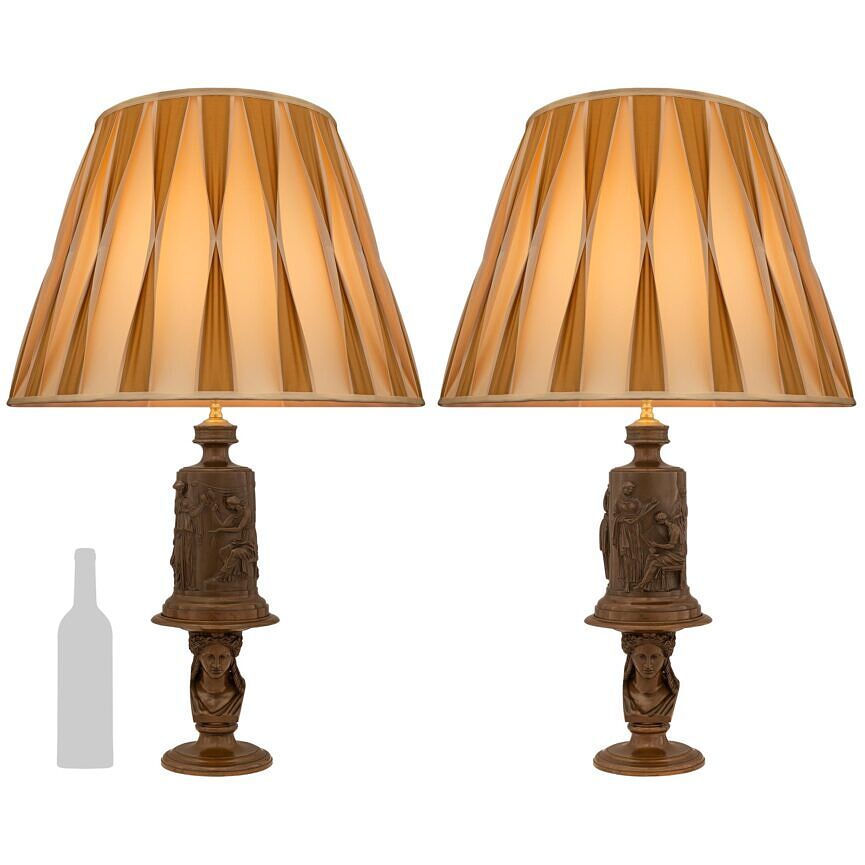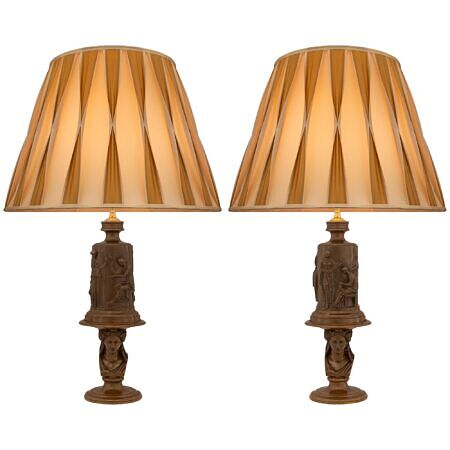A pair of French 19th century Néo-Grec st. Grand Tour Period patinated Bronze lamps, signed Barbedienne
List: $15,800.00
A handsome pair of French 19th century Néo-Grec st. Grand Tour Period patinated Bronze lamps, signed Barbedienne. The pair of original oil lamps are raised on circular socle shaped bases below the stunning and high quality busts of the goddess... — Read More
A handsome pair of French 19th century Néo-Grec st. Grand Tour Period patinated Bronze lamps, signed Barbedienne. The pair of original oil lamps are raised on circular socle shaped bases below the stunning and high quality busts of the goddess Athena. Each oil lamp displays wonderful and richly chased classical scenes of female figures playing instruments and weaving while dressed in elegant flowing fabrics. Above is a mottled top cap below our signature Cedric DuPont Antiques two-tone pin-cut shades. All original rich and warm patina throughout. — Read Less
All light fixtures have been inspected and rewired to US standards.
- Item # 13790
-
H: 31.5 in L: 7 in D: 7 in
H: 80 cm L: 18 cm D: 18 cm
- Shade Diameter: 22 in
- France
- 19th Century
- Patinated Bronze
- Grand Tour Period Read More, Neo-Greek st. Read More
- Ferdinand Barbedienne Read More
Related products
-
# 13083 - H: 29" L: 8" D: 8"
-
# 12430 - H: 30" L: 6" D: 7"
-
# 6286 - H: 22" L: 6" D: 5"
-
# 7202 - H: 25" L: 5" D: 5"































